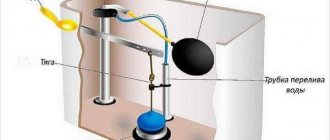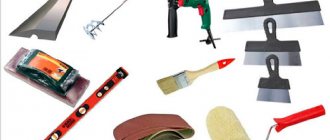Pruning roses stimulates growth and results in more blooms and a healthier plant overall. Don't be afraid to prune a rose - in spring, buds appear along the entire length of the shoot, the bush will survive in any case, even if you cut off a little more.
The basic principles of pruning roses are the same regardless of the type of rose, but the timing of pruning, the amount removed, and the purpose vary slightly depending on the type. Here's how to prune roses.
What tools do you need to prune roses? Hand pruners (bypass pruners are best), pruning saw, loppers, gloves, watering can, water-soluble plant food.
Pruning roses - why trim rose bushes
After pruning roses, positive changes occur:
- young branches and shoots grow;
- the root system begins to develop to the maximum, and this improves the nutrition and growth of the bush;
- all energy is spent on the development of new shoots and flowering, since everything unnecessary is removed.
Blooming red rose
Note! Proper pruning of roses reduces the risk of infection and disease.
How to prune roses correctly? Circumcision is performed for different purposes.
Sanitary
The procedure involves the spring removal of shoots that have turned black and have spots on them. You should not try to save these branches, they will dry out anyway and will serve as a source of disease development. You need to cut off gradually, in parts, until you get to healthy wood.
Rejuvenating
To keep a rose happy in the garden for a long time, you need to carry out anti-aging pruning. By getting rid of old shoots, you can achieve the appearance of young branches.
Experienced gardeners advise removing branches that are more than 3 years old every spring. They are easy to notice: their color is not rich green, it seems that they have dried out. If you leave them, you won’t be able to achieve abundant flowering, because such branches do not transfer nutrients well from the root system.
When the bush blooms worse, growth has slowed down, then it is urgently necessary to carry out radical pruning. You should not spare the shoots; it is better to leave a few young branches, this will restore the plant and return it to active flowering. In the future, in the summer or autumn, you will need to leave about 4 shoots, and in the spring, do not forget about feeding (mineral microfertilizers and rotted manure will help).
To enhance the development of the root system, you should use “Kornevin” or “Heteroauxin”. In the first case, you will need 1 packet per 5 liters of water, and in the second - 100 mg per 10 liters of water. The branches need to be cut into rings; there should be no stumps.
Formative
If the previous prunings (anti-aging and sanitary) are carried out correctly, the frame of the bush will be formed. Therefore, you can start drawing the skeleton of the rose.
Branches that grow from below should be cut off. They are usually weak and unable to bloom. Also, wood without buds is not needed. By the way, if such branches appear, it is worth reconsidering the care. Perhaps a lot of fertilizer has been applied or the plant does not have enough light.
It is necessary to pay attention to which shoots compete and rub with each other. Remove those branches that look weaker. If several shoots have grown from one bud, you need to leave one. To improve lighting, remove the branches inside. Forming a rose bush is an important stage.
Stimulating
Its goal is the emergence of new shoots. Weak branches should be trimmed more, and strong branches should be left virtually untouched.
Interesting! Rose stands out for its excellent regenerative properties. Proper care and pruning will give the plant many years of life. It can grow and develop in one area for 2 decades. The main thing is to know how to prune roses correctly.
Tips from experienced gardeners
In order for cut roses to remain fresh for a long time in a bouquet, you must adhere to certain rules
Some professional tips for cutting roses in summer:
- The stem is cut at the base above a living bud turned outward. In this case, 2–3 internodes are left on the stump. Then we can hope for re-blooming this season.
- Do not cut flowers from one-year-old bushes, as well as from underdeveloped and disease-affected plants.
A rose bush will remain in bloom for a long time if you remove only the withered buds in a timely manner without touching the others. Roses planted last season require a special approach. They are not allowed to fully bloom for the first time - the buds that have not yet opened are immediately removed, leaving no more than 2-3 pieces. In this case, flowering shoots should alternate with empty ones. Only then will the plant evenly receive nutrients, which is important for the proper development of the bush.
When to prune a plant
Pruning forsythia - how and when to do it
When should roses be pruned? Roses are pruned three times a year; in winter they are not touched. Each of them has specific goals:
- Spring. During this period, you will need to remove weeds and branches that have deteriorated over the winter. Sanitary pruning, as mentioned above, is carried out so that a bush is formed. Special tools are used. They must be sharp. The cut must be made at an angle of 45 degrees.
- Summer. The shrub needs watering, weed removal, and pest control, if any. When flowers fade, they need to be removed so that the plant does not waste energy feeding them.
- Autumn. Almost all roses need shelter for the winter. That is why they need to be trimmed and prepared for cold weather.
Rose pruning
Note! The climate in which the rose is grown is taken into account. If this is the middle zone, south, then you can start leaving in March-April. In the northern region, it is worth holding off on pruning until May.
Why is autumn pruning so important?
It is beneficial to do several prunings per year. But it is in the fall that gardeners prepare plants for winter so that they do not die.
In addition to trimming the branches, it is worth using an antifungal drug. This will protect the plant from various diseases. Before the cold weather, all foliage is removed. If left, it will begin to rot, and this will be bad for the health of the rose. It is on the leaves that bacteria and fungi accumulate. They are also removed from the ground where the bush grows. It is best to burn them or take them away from the garden or bed.
They begin to care for roses from the beginning of September. When it has finished flowering, fertilize and trim the branches. For the winter, the bushes are covered so that they do not die.
Important! Pruning should be done in the fall when the temperature has not dropped below +10 degrees. This type of weather often occurs at the end of October.
Taking into account the type of flower, the height of the cuts is selected:
- if it is a crown-flowered plant, then about 8 buds are left, the branches are cut by 1/3;
- Medium pruning should be abandoned if the variety is climbing or bud-covering (the latter do not need to be pruned before winter);
- if the roses are small-flowered or polyanthus, then short pruning is carried out.
Spring pruning dates for beginners
The time for pruning will be determined by the buds themselves - when they swell, they begin to work. If you rush, the rose will suffer from return frosts. If you work on the blossoming buds, the rose will weaken, since the cut shoots will take away some of the nutrients.
Before the procedure, it is important to make sure that there are no night frosts outside, as sudden frosts can have a bad effect on the plant. All manipulations should be carried out before the sap flow begins. If you neglect this rule, then there is a possibility that the roses will bloom sluggishly.
We recommend reading these articles:
What to put in a hole when planting potatoes for a good harvest
Planting “tykanka” onions according to the lunar calendar in 2020
Planting potatoes in April 2021 according to the lunar calendar
The timing of pruning depends on the warming in a particular area. It is necessary to take into account weather conditions and choose the appropriate time for the procedure.
The most ideal moment is established warm spring weather, after the buds have swelled, while the growth of new branches has not yet begun. This period begins in March-April.
You need to choose a warm and sunny day and get to work.
It is necessary to take into account the region and the climatic conditions within it. In the middle zone, in the south with a temperate climate, it is necessary to carry out manipulation in March or early April.
If we take the northern regions - the Urals, Siberia, then the most successful procedure will be at the end of May.
In such regions, the warming of the soil occurs quite slowly, and a cold snap can occur at any moment.
What are the pruning methods?
Thuja hedge - pruning and shaping
There are such cutting methods:
- Short. It is also called low, strong pruning. It is often carried out in the spring if you need to prune hybrid tea, polyanthus roses, as well as a variety of floribunda. If new bushes have been planted, then this pruning method is also used. The plant is cut, leaving 1/3 of the branches, which should have 3-4 buds.
- Average. This is a moderate pruning. It is often used when the plant has flowered. It is more suitable for medium-growing varieties. The branches are cut off, leaving 5-7 buds.
- Long. In this case, 8-15 buds are left.
Correct and incorrect pruning of rose bushes
Note! Often gardeners combine different pruning methods to get a beautiful bush.
It is necessary to monitor the plant during the entire growing season, cutting off unnecessary or affected branches. This will protect against the occurrence of diseases.
Leave leaves and extra shoots
You cannot leave foliage on branches when pruning, no matter whether it is dry or still green. If roses are covered with leaves left, they will subsequently begin to rot. Rotten foliage is an ideal environment for the development of fungi and pathogenic bacteria. During the winter, they can gradually completely spread over the entire rose bush. And in the spring, having removed the cover, the gardener will discover a dead plant. Therefore, when pruning, it is important to completely remove all leaves.
5 common mistakes in cutting roses in summer
Also, young, immature and thin branches should not be left. Such sprouts are too weak to survive the winter even under cover. In the first frost they will freeze and begin to rot. As a result, they will become a suitable place for fungal microflora. Therefore, there is no need to feel sorry for such growth. It should be cut off completely and only strong shoots should be left.
What needs to be removed during the pruning process
Pruning mock orange - rejuvenating, shaping
For pruning to be beneficial, you need to know how to prune a bush rose correctly. The cut should be oblique, located 0.5 cm above the kidney.
If you want to grow a spreading bush, you should prune above the bud that is directed to the outside. A new branch will appear from it, which will not grow into the center of the bush. But if you cut the shoot above the bud, which is directed inside the bush, then it will form upright, but in this case flowering may deteriorate. It all depends on the wishes of the gardener himself.
Proper pruning of roses
The age of the plant is also taken into account. If it is a young annual, then the branches are shortened by half. In the future, they are trimmed smaller.
During pruning, old shoots are removed, as well as branches that have weakened or dried out. Pay attention to weeds, they interfere with the normal growth of the rose. Most gardeners do not leave shoots that grow towards the center of the bush.
Temperature
The most appropriate time for sheltering is when the cold weather has already persisted constantly (at least 5-7 days), and according to weather forecasters, no warming is expected in the near future. The soil should freeze slightly, form a hard crust, and not thaw even in the daytime under the sun's rays.
If the thermometer stays stably around -2...-4 °C during the day, and drops to -5...-6 °C at night, then it’s time to insulate the roses. Even cold temperatures down to -15 °C are not scary for uncovered bushes, so there is no need to rush too much. The main thing is that the frosts are not too long.
Much more dangerous are sudden temperature changes, when during daylight hours the sun still warms well, but with the onset of darkness it seriously freezes. Prematurely covered plants confuse the seasons and begin a new growing cycle.
Many modern varietal and hybrid forms of roses cannot themselves determine when it is time for them to fall asleep, going into a state of winter dormancy. The gardener’s task is to help the bushes stop in time, stop developing and flowering, and also go to bed safely.
What tools are used
To trim and care for roses, you need to get pruners with sharp blades that resemble scissors. With such a tool, the branches are cut evenly, and the crust does not peel off. It is better that the pruning shears are used only for caring for roses.
To ensure that the tool does not harm the plant, it should be sharpened after a while and disinfected. Before the start of winter, it is treated with machine oil and left until spring.
To remove thick branches, use a lopper. It has powerful handles that resemble levers. And with a garden saw you can remove very old shoots of large diameter. These are the main tools that are needed to care for a rose.
How to do it correctly: subtleties, step-by-step instructions (important: read to the end)
With the shelter of a rose garden, everything is not as easy as it might seem at first glance. The queen of the garden rightfully requires a particularly caring attitude and the most painstaking care. There are several important nuances, without the strict implementation of which it will not be possible to properly prepare roses for a harsh (or not so harsh) winter.
Trimming
Perhaps pruning is the most controversial point in the autumn care of roses, during the discussion of which many copies are broken. Not all gardeners are sure of the need for this event, so they send their bushes to winter in their natural, that is, unpruned form.
But still, most rose growers are sure that roses must be pruned in late autumn. A properly trimmed plant becomes stronger, its frost resistance increases, and the crown is better ventilated.
First, in September-October, rose bushes, and especially those “unlucky” ones who do not suspect that winter is ahead, need to tear off the leaves from the lower half. This way the plants receive a kind of signal about the onset of autumn, which contributes to better ripening of the wood.
The entire crown cannot be completely exposed until it is covered for the winter. Roses still need green mass, because while it is warm outside, photosynthesis occurs in it and the necessary useful elements accumulate in the root system. In addition, let the nutrients from the leaves flow smoothly into the stems, thereby increasing their resistance to cold.
Leaves left under cover increase the likelihood of putrefactive processes developing and stems becoming overheated. In addition, pests and pathogenic microorganisms often settle on them for the winter.
Shortly before the expected day of covering work, the rose bushes are pruned, removing all buds, flowers, remaining leaves, as well as young immature growth, since they will not survive the winter anyway. For sanitary purposes, plants are freed from diseased, dry, weak and non-viable stems.
In the future, it is most logical to trim the branches exactly to the height of the future covering structure, so that the bush can be completely hidden under it. Some people do just that. However, not all types of roses require more thorough late-autumn pruning.
Experienced flower growers advise:
- shorten polyanthus to 0.2-0.3 m;
- hybrid tea - up to 0.3-0.4 m;
- shorten floribundas to 0.4-0.5 m;
- climbing and ground cover can be cut off (pinched) the tops;
- Do not prune bush and park roses at all.
There is an unwritten rule that the older the rose bush, the higher it should be pruned. Use a sharp tool to avoid crushing plant tissue.
It is ideal if the pruning process takes place on a clear, fine day with a temperature of +2-0 degrees (since in severe frosts the stems become too fragile and often break).
Garbage collection
All plant residues and debris that have accumulated under the rose bushes during the warm season must be carefully raked out with a rake and then burned. This will help avoid fungal diseases, the spore pathogens of which love to settle on such organic matter.
Top dressing
At the very beginning of autumn (the first ten days of September) or even in the last days of August, it is necessary to feed the roses for the last time this season, since the supply of nutrients in the soil has been greatly depleted. During this period, phosphorus-potassium and magnesium-potassium fertilizers are required to promote better ripening of wood.
You can use any of the following:
- potassium magnesia - 15-25 g/bush;
- potassium monophosphate - 10-20 g/bush;
- potassium sulfate - 8-10 g/bush and double superphosphate - 8-10 g/bush;
- mineral complexes with a minimum nitrogen content, marked “Autumn” or “Autumn” (Fasco, Sotka, Florovit, etc.) - dosage according to the instructions.
If the weather is rainy and the soil under the rose bushes is damp, fertilizers are applied in dry form, simply scattering them over the surface of the ground. Then they are embedded a little into the ground with a rake. When there is little rain, the granules are first dissolved in lukewarm water (5 l) and applied under the bushes in liquid form.
Roses respond well to foliar feeding applied to the leaves. Only the concentration of the working solution needs to be halved.
Nitrogenous components are excluded at the end of the growing season, as they can cause increased growth of the above-ground parts.
What to process
Roses are, in principle, susceptible to various fungal diseases, and under winter cover an extremely favorable environment is created for infection. To avoid rotting of the stems and protect the bushes from fungus, it is necessary to carry out a pickling treatment.
You should think about how to treat plants before wintering for maximum effect. Rose bushes, sparing no leaves if they are still left, and the soil in the bush area must be sprayed with one of the antifungal agents:
- iron sulfate (3-4%);
- copper-containing preparations (CHOM, Oxychom, etc.) - according to the instructions;
- Bordeaux mixture (3%);
- fungicide (Strobi, Skor, Topaz, etc.) - according to the instructions for use.
Hilling
There is also no consensus on whether roses should be hilled. Many believe that this is absolutely necessary, since in this case the root system will be protected from frost. However, in wet weather, the powder (peat, soil, compost, etc.) becomes wet and freezes, encasing the stems in an icy shell.
The need for hilling depends very much on the type of soil and climate in a particular area. If the area is heavily planted with trees and the ground there is always damp, then it is better not to cover the bushes. After all, frozen backfill can easily damage the shoots.
Definitely, only plants of the first year of planting and those planted recently, in the fall, need to be hilled. Self-rooted roses obtained from cuttings require mandatory insulation of the root system, since their roots are very vulnerable to cold weather.
Roses grafted onto rose hips, which are usually sold in nurseries, tolerate frost much better, so they don’t need to be hilled. But the grafting site must be buried at least 4-6 cm; if it is located above the soil surface, then hilling is indispensable.
You cannot rake the earth from under these same bushes, throwing it under the base. After all, in this case, the peripheral roots are exposed and then freeze slightly. For hilling, you need to take only dry soil, taken from another place or purchased in a store.
Crouching to the ground
An alternative to late autumn pruning of roses (especially some types, such as climbing roses, etc.) can be bending the branches to the ground. Some gardeners practice this method. They claim, based on their own experience, that pruned plants winter worse.
The stems should be bent in still relatively warm weather, before frost sets in. In cold weather, wood becomes brittle, bends poorly and breaks easily. So that the shoots do not immediately break, but get used to a horizontal position, they need to be tilted gradually.
Technology:
- The branches are tied several at a time into small bundles.
- Using a rope, they are fixed to brackets or hooks driven into the ground.
- Then they begin to tilt and attract the bunches to the soil, doing this in several passes.
- The branches are finally fixed when they are almost at the ground or at the desired height.
In the place where the rose shoots come into contact with metal elements, it is advisable to place an insulating material (for example, a piece of polystyrene foam) or wrap the bunch with fabric. Bent bushes should not lie on the cold ground; it is better to lay the branches on a backing made of boards, roofing felt, thick cardboard, etc.
Varieties with thick, rigid stems that cannot be bent in any way must still be trimmed before sheltering. Experienced rose growers shorten the shoots to about 0.4 m.
Frame construction
Most often, a frame structure is installed over bushes of properly prepared roses, onto which a covering sheet is then stretched. To construct the frame, plastic or metal arcs, wooden blocks, plywood panels, etc. are used.
Materials used
To insulate a rose garden for the winter, you can use a variety of materials and even improvised means.
Lapnik
A traditional natural material, used since ancient times to cover various wintering perennials. Coniferous branches perfectly retain snow, and numerous needles create an air layer that retains heat coming from the ground.
The specific pine aroma repels rodents, and the pine needles themselves are an excellent antiseptic that prevents the emergence and spread of various infections. In addition, roses are well ventilated under the spruce branches.
Sometimes acquiring the right amount of spruce branches is quite problematic, because not everyone has a coniferous forest behind the fence.
Sackcloth
Rough natural canvas provides good air exchange, but it is not very effective against frost. During thaws, when it gets wet, it becomes saturated with moisture. After a cold snap, wet burlap binds the bush with an icy shell. As a result, the plant may freeze.
Recently, burlap is rarely used as a single-layer shelter. In addition to it, a polyethylene lining is usually used to protect it from getting wet.
Cardboard
Excellent insulating material that protects from frost and retains heat. However, cardboard is short-lived because it gets wet and limp from water. It is better to lay it as a layer between other materials to create air gaps.
It is very convenient to cover rose bushes with upside down cardboard boxes, but you will have to put plastic on top.
Garden batting
Durable rolled fabric that lasts for many years. Garden batting, which among gardeners is more often called obernite, does not burn or rot, and perfectly protects delicate roses from sunburn, from frost and from sudden temperature changes, freezing rain and other adversities.
Obernite has high breathability, which prevents damping off and rotting of plants. Garden batting is a breathable material, but there is still no need to add additional bedding under the bushes when using it.
Straw or hay
They hold back snow perfectly and protect rose bushes from the cold. But the plant layer cakes, gets wet from the snow, freezes, forming a dense layer that does not allow air to pass through, and then, thawing, rots. In spring, the ground underneath warms up very slowly.
A significant disadvantage of using hay or straw is that mice love to build their nests in it.
Sawdust or shavings
Free (for many summer residents and owners of their plots) backfill that perfectly retains heat and protects the roots of roses in winter. However, when wet, sawdust begins to rot, especially during thaws. In places of contact with the stems, stripes of mycelium appear and the plant rots along with the sawdust. All this is fraught with the death of bushes.
You can use a sawdust mound to insulate roses, but this must only be done at an established negative temperature and so that wood waste does not touch the stems.
Polyethylene
Film is the most popular covering material used by rose growers for several decades. It perfectly protects from precipitation, wind and cold. But due to the lack of breathability, condensation accumulates under the polyethylene.
Excessive humidity inevitably leads to damping off and rotting of branches. Therefore, it is necessary to have ventilation gaps between the film and the soil to ensure air exchange. You can avoid negative consequences by partially opening the shelter when the temperature rises.
Nonwoven agricultural materials
Specialized thin polymer synthetic materials, widely used in covering work. Non-woven fabrics (spunbond, lutrasil, agril, agrospan, etc.) serve for a long time, perfectly transmitting moisture, air and sunlight.
For winter, light agrofabrics are used that do not heat up from the sun. On sale you can find ready-made caps of various sizes and configurations that are placed on plants. If you wish, you can sew rose covers yourself.
Construction Materials
When covering, it is not forbidden to use available means in the form of all kinds of building materials: pieces of roofing felt, boards, plywood, sheets of iron, slate, polycarbonate, etc. Even large plastic bottles and canisters with the neck cut off are used.
Methods for different species
The choice of a specific shelter option for garden roses depends on the available variety and variety of crop, as well as on local climatic conditions.
Climbing
Long lashes must first be removed from the supports. This needs to be done in advance, 3-4 weeks before the final shelter for the winter, while it is still warm. In cold weather, it will no longer be possible to bend the weaving woody shoots without breaking them. The branches need to be pulled as close to the ground as possible, doing this carefully and gradually.
The algorithm of actions is as follows:
- First, the stems are unhooked from the supporting structures and simply left hanging freely so that they bend under their own weight for a couple of days.
- Then they are tied in 3-4 lashes (or more are possible) into bundles and gradually pulled towards the soil. They do this carefully in several passes, each time lowering the branches lower and lower until they are on the ground.
- If the lashes have reached the very ground, then an insulating bedding (boards, pieces of slate, plywood, thick cardboard, etc.) is placed under them so that they do not lie on the frozen ground.
- The stems are fixed in the desired position by pinning them with staples.
- Above the bent bushes of climbing roses, a frame of arches or a structure of two wooden panels is installed in a “house” (as in the section with bush roses - see below).
- From above, the entire structure is covered with agro-fabric, not forgetting to fix the canvas around the perimeter.
In areas where there is usually little snow and frosts are not very severe, you can get by in a simpler way:
- Lay the lashes on a bed of pine needles or spruce branches.
- Cover the top with the same spruce branches.
- Cover the entire mass with spunbond or other non-woven agricultural material.
In the south, there is usually no need to cover roses, but where light frosts do occur, climbing varieties are wrapped with a covering cloth without removing them from their supports.
Bush
For bush roses, several options for winter shelter are acceptable:
- Build a kind of hut over the plants, made up of two wide panels or knocked together wooden panels. Close the ends. Then cover the “house” with film to protect it from precipitation. The ends can always be folded back (for ventilation). This method is good for the middle zone and northern regions.
- Hill up the bush high and cover it with spruce branches. This shelter option is suitable for warm winters, when severe cold does not occur. If a serious cold snap is suddenly expected, the roses can be temporarily additionally covered with a wooden or cardboard (thick-walled) box.
- Place the stems on the ground, previously covered with insulation (boards, cardboard, etc.), secure them with staples. Then cover the bushes with pine needles or cover them with spruce branches. Install pegs or arcs around the perimeter on which to stretch the film, securing its edges with stones or bricks.
The so-called air-dry shelter is indispensable in regions with a harsh climate (Siberia, the Urals), but requires regular ventilation.
Standard
Standard roses are insulated for the winter in this way:
- Young plants, whose trunks still bend well, are carefully bent to the ground and secured with pins or staples. Spruce branches are placed under the bottom and on top of the stems, then covered with roofing felt or film to protect them from moisture.
- Mature plants that cannot be bent down are covered differently. Place a fabric cover or bag over the crown and pour dry leaves or pine needles inside. Then tie it with a rope near the trunk so that the backfill does not spill out. Wrap the standard itself with several layers of burlap or spunbond.
- Where winters are especially harsh, you will need to install some kind of frame structure made of roofing felt or boards around the bush, and cover it with polyethylene on top. It is advisable to pour insulation inside the shelter (sawdust, dry leaf litter, etc.).
Park
Park roses, which are distinguished by their increased frost resistance, are never covered in warm regions. Only young specimens can be pestered, just in case. In the middle zone, it will be quite enough to cover the bushes with spruce branches to retain the snow cover.
In cold and northern regions, you will have to build a more solid shelter from wooden boxes made of plywood panels or boards. To prevent moisture from getting inside the structure, it must be covered on top with a waterproofing material (tar paper, film, slate, etc.).
Floribunda and hybrid tea roses
For hybrid tea roses and floribunda roses, which are greatly shortened in height, it is not at all difficult to build an air-dry shelter:
- Enclose the bush with a frame in the form of a cone. You can knock it out of wooden blocks or weave it out of thick wire.
- Stretch a roll of non-woven insulation over the frame, securing it to the structure with ropes.
- Cover with film that will prevent moisture and precipitation from entering.
- Sprinkle the bottom of the film with earth or press it down with bricks and boards.
Instead of a frame, you can use large plastic containers in which holes are made for ventilation (ventilation). After the onset of cold weather, it is important to cover the containers with plastic.
How to prune shoots correctly
How to prune roses correctly? First of all, you need to understand that the cut should be oblique. The secateurs should be held at an angle of 45 degrees. The cut should not be directed towards the bud, because water will flow directly to it, which will lead to rotting. They also do not leave stumps, which will dry out later, which can lead to diseases.
If the cut is large enough (larger than the size of a nail), you should use garden varnish or a special paste. The Rannet product may be suitable for this purpose. In this case, protection is created against infection, drying out, and loss of juices.
Note! Roses grow thorns that can easily injure your hand. To prevent this from happening, it is recommended to use gloves made of thick fabric. Many gardeners lean towards genuine leather or suede. It's better if they are tall.
What to do after?
It is recommended to treat the plant after all of the above procedures. The choice of product depends on the climate. There are two options:
- in cold weather (below +5), iron-containing preparations are used;
- at temperatures above +6 - copper-containing substances.
Important! Iron sulfate at warm temperatures can burn the bushes, and copper preparation at low temperatures will be useless.
After all the procedures, all that remains is to wrap the bushes, which will provide favorable conditions during winter “hibernation”.
Which varieties should be pruned in the fall?
Autumn pruning is carried out for many varieties. Below is a detailed description:
- Floribunda. Combined pruning is carried out. Half the branches are not touched much, leaving about 10 buds. This will cause flowers to appear early. The remaining shoots are cut off more; 3-5 buds should remain on them. This will provoke the appearance of new branches. Flowering on them will be observed later. These varieties bloom for a long time, so if temperature indicators require preparing roses for the winter, do not spare the flowers; cut them off. If you delay, the plant may die. Pruning directly depends on the wishes of the gardener. If you want to see a low, lush bush with a lot of flowers, then you should do some heavy pruning. To get a tall shrub, where the buds will be located at the top, you do not need to trim the shoots much.
- Polyantha roses. The shrub should consist of 7-8 main shoots. Everything unnecessary is removed. All branches that are directed inside the bush are also cut out. Before winter, the shoots are shortened by a third.
- Miniature roses. After autumn pruning, 5-7 buds should remain.
- Park roses. In autumn, weak shoots and shriveled branches are removed. Pruning is done to increase density. But such species easily endure winter.
- Climbing roses. Such varieties are pruned in order to direct the weaving in the desired direction. Pruning climbing roses is also important in summer.
- Semi-climbing roses. The third part of the branch needs to be cut off.
- Standard species (pruning hybrid tea roses). In this case, about half of all shoots are removed. Some people are afraid of overdoing it. But these varieties differ in that after winter they have many young branches.
Almost all varieties of roses need pruning.
Ground cover roses deserve special attention. These varieties cover the ground with buds. They are not cut. The only thing gardeners advise is to remove flowers before winter and shoots that interfere with the development of the plant.
Care after main pruning
Roses that have undergone basic pruning should not be immediately exposed to the sun and heat. Before the leaves appear, it is better to keep trimmed indoor beauties in a room with a cool temperature of about 10-11 degrees and in diffused lighting. They can be moved to bright light and room temperatures only after the first leaves appear.
Watering after pruning for indoor roses should be very careful. Overmoistening at this stage poses a very big threat, and complete drying of the substrate may not allow the plant to produce full-fledged strong branches. Feeding is not resumed until the roses begin to actively develop. It is also worth paying attention to air humidity: high humidity in the first weeks after pruning increases the risk of the spread of diseases and damage to indoor roses by fungal infections.
Caring for indoor roses after pruning. © klenova
Formation of a rose bush in the first year of planting
Many people wonder how to form a good rose bush in the first year after planting. For normal formation of the bush, shoots are pinched. This work begins when the 4th leaf appears. If buds appear, they are removed. This promotes the development of new branches. Over the summer, a beautiful bush will form.
Advice! If you want to admire the flowers in the first year, then you can stop removing the buds in August and let the rose bloom. Flowering will appear in the same month.
Step by step guide
The pruning algorithm is the same, regardless of the variety. How to cut roses? Even a novice gardener can cope with this task. Below is a description of the steps:
- First you need to pay attention to the tools. They must be clean and sharp. To disinfect them, treatment is carried out with copper sulfate or manganese solution.
- The bush is examined, weeds, debris, and fallen leaves are removed from the ground. If there is foliage on the plant, it must also be removed. If the leaves lie under cover, moisture will evaporate, and then rotting will begin, which will provoke a disease of the bush.
- Trimming begins. Initially, wild growth that grows at the roots is removed. These are light green branches. It is worth getting rid of shoots that grow incorrectly, interfere with the formation of a beautiful bush, or have damage or diseases. Weak branches are removed. You also need to remove shoots without buds to the very base.
- After such work, the sections need to be processed using garden varnish, paste, and biobalsam. Otherwise, an infection may occur. All branches that have been cut must be removed and not left near the plant.
- Finally, the bush is sprayed with biological products and covered for the winter. In the spring, re-processing of the cuts will be required.
Rose pruning
It is important to prune roses correctly throughout the year, following a pattern. Autumn pruning is especially important. How the rose will bloom and develop depends on this. Proper care will protect against disease and plant death.
Why is autumn pruning necessary?
The care procedure strengthens the root system of the bush, optimizes metabolism, and rejuvenates the plant.
That is, in general, autumn pruning of the bush helps to achieve lush and beautiful flowering in the next season. In addition, the event increases the resistance of plants to diseases and pests.
Note! The main goal of autumn pruning of flowers is to prepare them for shelter, so that the bushes are more compact and easier to cover for the winter.
The main formative pruning occurs in the spring!
When and how to cover roses for the winter
At the end of October, when light frosts begin and the temperature approaches 0, it is necessary to postpone all gardening activities and start covering delicate flower crops.
If you haven’t earthed up the rose garden, then after treating it with a 3% solution of copper sulfate or a 3% solution of Bordeaux mixture, get down to business. You can spud with peat, earth or earth with sand.
As soon as the temperature drops below 0, it's time to cover the roses for the winter. There are many ways to cover, choose the one that suits your type of rose.
Shelter dates by region
The timing of shelter depends on the weather in your area. With the onset of autumn, it is necessary to look at the weather calendar for autumn, because each region approaches winter frosts at different times.
The timing of covering roses for the winter and cutting them is carried out according to the time of winter. In regions of the country it occurs at different times.
In the northern regions, sheltering begins at the end of September or beginning of October.
Preparing roses for winter in the Middle Zone is carried out in mid-October until the end of the month. This includes pruning, pest control and watering in dry autumn.
A winter-hardy rose variety, “Moscow Beauty”, which belongs to the grandiflora group, has been developed for the Moscow region and Moscow. The Moscow climate is suitable for this variety, so the bushes, with soft pink flowers with dark pink edges, adorn the streets of Moscow.
In the Leningrad region, roses are prepared for wintering until October 15. And the shelter is carried out until November, but not later than the second decade. The unstable Leningrad climate is not suitable for all types of roses. The varieties that are grown in Siberia are just suitable for growing in the Leningrad region.
In the Urals and Siberia, winter comes earlier. Therefore, autumn work in the garden must be carried out before the onset of frost. Rose pruning should be organized at the end of September. And in October the roses should already be wrapped for wintering.
In the Moscow region, it is recommended to trim rose bushes at the end of October, as soon as the temperature drops below 0C at night. There is no need to prune before so that the buds do not start to grow.
In the south of the country, roses are not covered for the winter. Sawdust or shavings are simply poured under the bushes. In the south there are no severe frosts, so shelter is not required. Pruning is not done before November.
Ways to cover roses for the winter
There are several ways to cover roses:
- Apply a 35 cm layer of high-moor peat, and cover with spruce branches on top to prevent the peat from scattering. The temperature under such shelter will be constant throughout the winter.
- Build a tent over the bushes from arches and spunbond, as in the photo. At first, you need to ventilate by lifting the covering fabric.
- Long branches of climbing varieties are removed from the support, bent, laid on boards, then sprinkled with peat or sand. A piece of roofing material, spruce branches or covering material is placed on top.
If there is a snowy winter, cover any shelter with snow, this will keep the perennials warmer.
Rules for bending bushes
Do not wait for frost to bend the bushes; they may break in the frost. If the bushes are rigid and less flexible to bending, then they can be tied up and slightly bent.
Shelter materials
Non-woven material is considered the best covering material. These are lutrasil, burlap, agrofibre, geotextile, spunbond. This material allows air to pass through and condensation does not accumulate under it. In addition, it is very durable and environmentally friendly.
What not to cover roses for the winter
Many gardeners use regular film. It cannot be used, because condensation will form underneath it, which will destroy the flower.
At what temperature should roses be covered for the winter?
Flower growers recommend adhering to the following deadlines: when the ground is frozen and the temperature remains at minus 5, then you can safely begin the sheltering procedure. If this procedure is carried out earlier, the buds may begin to open and grow, and this is very harmful for the plant.
A rose in the garden creates a good mood, so following the recommendations of experts, start growing the queen of flowers. If you are already growing roses in the garden, share in the comments which varieties are best suited for growing in the country house or in the garden.
Pruning hybrid tea roses
Trim the bushes of these roses into a ball shape. In such crops, buds appear on the shoots of the current year; accordingly, they must be greatly shortened. On young bushes, leave two to four buds at a distance of fifteen centimeters from the soil level, and on adults - four to six buds at a distance of twenty centimeters. Also leave two to four buds on the side shoots.
The inner stems, which promote strong density, are removed from the center of the bush.
Trim hybrid tea roses annually.
Feeding roses in autumn
Roses must be fed with potassium and phosphorus for the winter, but not with nitrogen. Fall fertilizer is applied by broadcasting granules on a warm, dry September day.
Potassium salt and superphosphate in granules are suitable for feeding - per 1 square meter. meter of soil scatter 15–20 grams of fertilizer under the bushes.
It is potassium and phosphorus that help strengthen the roots and help young shoots ripen. The following mixture will also be useful: dissolve superphosphate (25 g), potassium sulfate (10 g), boric acid (2.5 g) in a bucket of water and water the bushes.
The second feeding is carried out 2 weeks after pruning. They do it like this: superphosphate and potassium sulfate, taken 15 g per bucket of water, then watered.
Preparation for winter includes treating plantings from pests. Bordeaux mixture is a universal preparation for treating all plants. Dilute according to instructions and process.
The treatment will help destroy harmful organisms even on the lower branches of the bush and in the upper layer of the soil.
After pruning, be sure to apply a fungicide against fungi: Abiga-Pik - 50 g diluted in 10 liters of water. Spray the solution over the entire rose and the soil underneath it.
Feeding recipe to improve the elasticity of shoots and better overwintering of roses
Watch this short video in which Ivan Russkikh tells a recipe for feeding roses and poorly wintering plants. This fertilizer will help the flowers survive even the harshest winter.
- Dilute 10 g of potassium permanganate in a small amount of water;
- add 9% vinegar to 0.5 liters.
- Gradually and slowly pour in 150-200 ml of hydrogen peroxide until the solution is completely discolored.
- When the hissing stops, increase the volume of the solution to 10 liters.
- Water the bush with 0.5-1 liter of solution at the root. After this, water the soil with clean water.
At what time should this feeding be done? No earlier than a month before the planned installation of plants, but no later than 2 weeks before installation. This solution is also suitable for other poorly wintering plants.
Pruning floribunda roses
Such roses require strong pruning, otherwise a voluminous bush with weak stems and small flowers will grow. To prevent the crop from being severely depleted during such pruning, you can use the following method: make some stems short so that flowering occurs early, and cut annual near-root shoots to a third of their length.
Leave two or three buds on young side branches, and three to five buds on old ones. Cut out the old stems that grow in the middle of the bush.
Preparing roses for winter
At the end of August and beginning of September, roses begin to prepare for winter. What is the preparation? This, as a rule, involves sanitary pruning, fertilizing and shelter.
Gradual preparation of roses for wintering:
- If roses require abundant watering in the summer, then in the fall it should be stopped.
- Loosening around the bushes should also be stopped. This procedure can cause shoots to grow, and by winter it is even dangerous.
- From the second ten days of September, you need to cut off all the buds so that the plants “understand” that winter is coming.
- Remove all weeds under the bushes so that when they rot, they do not become a source of disease.
- If the roots appear above the surface, then the rose must be carefully hilled up so that the roots are covered with soil.
- For the winter, remove all leaves from the branches and burn them.
The next stage is autumn pruning of the rose, without which wintering will be difficult and harsh. In addition, proper pruning will be a good stimulus for the spring development of bushes. In the spring, new shoots will grow and lush buds will develop.
But it is especially important to know how to prune flowers growing in open ground, to what length and what types of roses especially need pruning.











